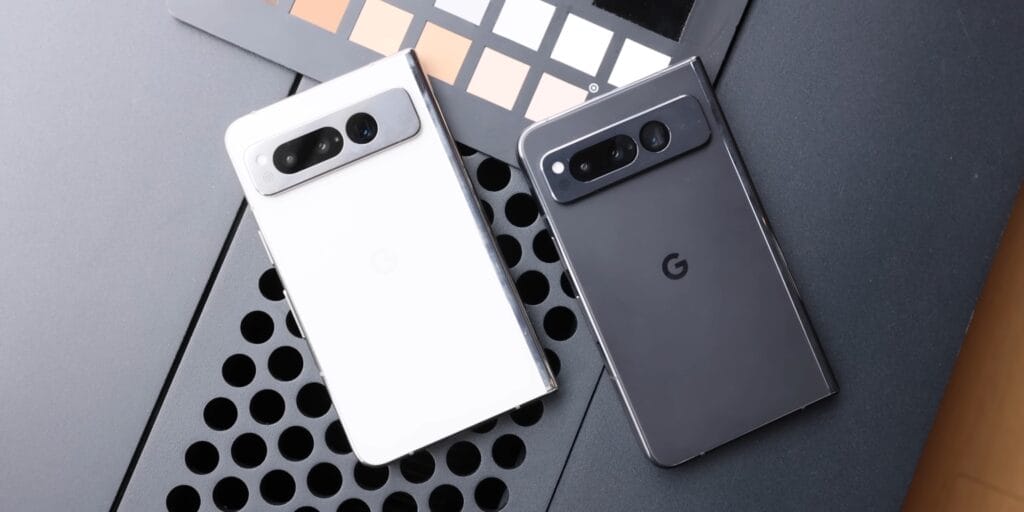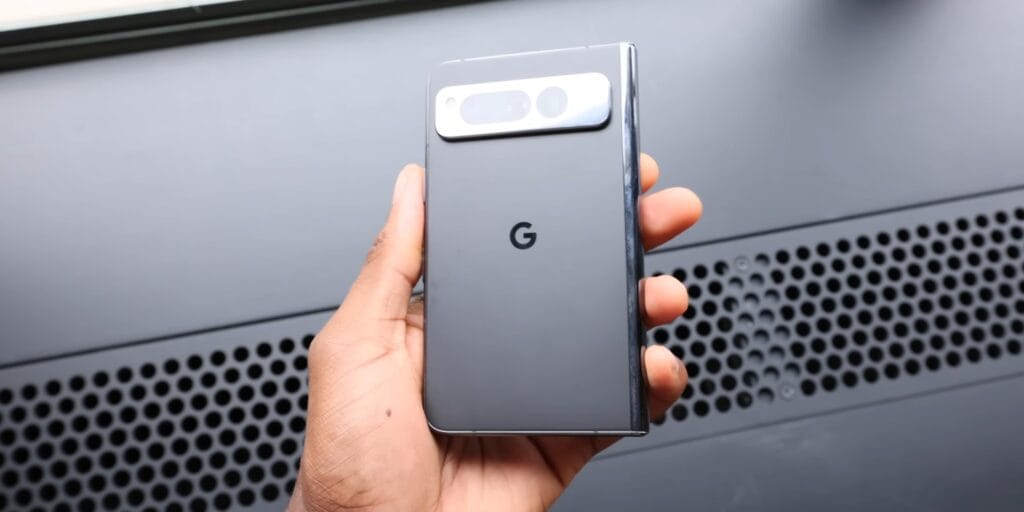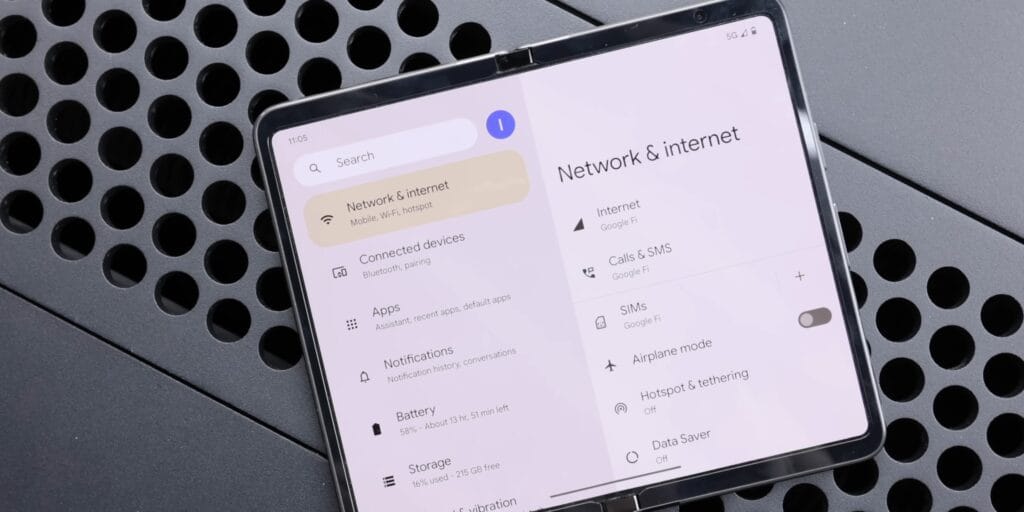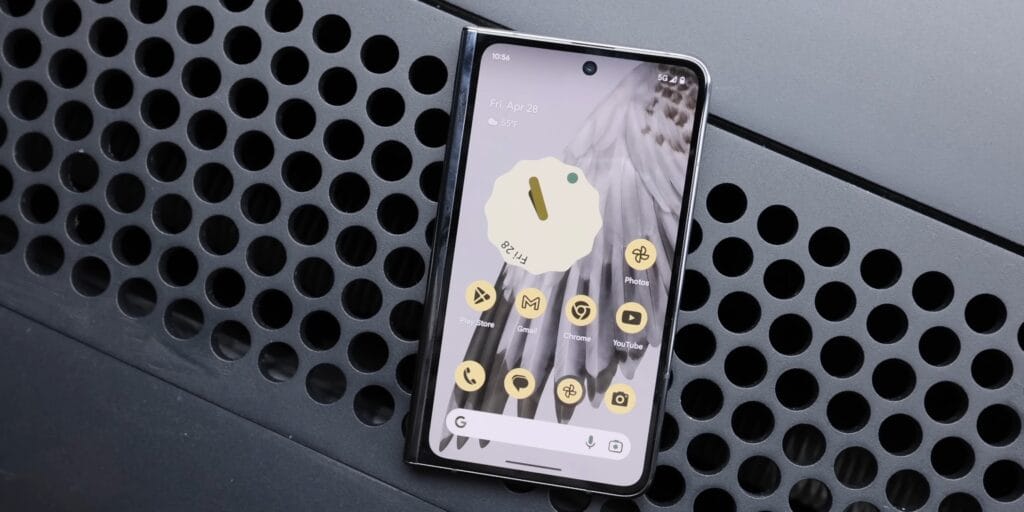I’ve spent a month with the Google Pixel Fold, exploring its potential and pushing its limits. Here’s my in-depth, personal take on this innovative foldable phone:
Design & Build:
The Pixel Fold is undeniably chunky when folded, but it feels surprisingly comfortable in the hand. The hinge is robust and opens smoothly, revealing a sleek tablet-like device. The glass and metal construction feels premium, but it’s a fingerprint magnet. The Obsidian color is understated yet elegant.
Display:
The dual displays are the stars of the show. The 5.8-inch outer display is wider than most, making it surprisingly usable for everyday tasks. Unfolded, the 7.6-inch OLED panel is simply stunning, offering vibrant colors, deep blacks, and excellent brightness. The 120Hz refresh rate on both screens makes everything feel incredibly smooth. However, the crease on the inner display is more noticeable than I’d like.
Performance:
Powered by the Google Tensor G2 chip and 12GB of RAM, the Pixel Fold is a performance powerhouse. It handles multitasking with ease, and demanding games run flawlessly. I edited videos, played Genshin Impact, and juggled multiple apps with no slowdowns. This phone is seriously fast.
Camera:
The Pixel Fold’s camera system is exceptional, as expected from a Pixel device. The 48MP main sensor, 10.8MP ultrawide lens, and 10.8MP telephoto lens work together to produce stunning photos with exceptional detail, color accuracy, and dynamic range. Low-light performance is top-notch thanks to Night Sight mode, and portrait mode creates beautiful bokeh effects. The 9.5MP front-facing camera takes sharp selfies, and video recording is excellent.
Battery Life:
The 4821mAh battery lasted me a full day with moderate use. However, heavy use, especially on the larger inner display, can drain it faster. The 30W wired charging is reasonably fast, but I was disappointed that wireless charging is not supported.
Software & User Experience:
The Pixel Fold runs Android 13 with Google’s signature clean and intuitive interface. However, the software experience is a bit of a mixed bag. While the split-screen multitasking is well-implemented, some apps aren’t fully optimized for the foldable form factor. There were also occasional glitches and stutters, which can be frustrating.
Connectivity & Additional Features:
The Pixel Fold supports 5G, Wi-Fi 6E, Bluetooth 5.2, and NFC. It’s also IPX8 water-resistant, but there’s no headphone jack.
Buying Recommendation:
Who’s it for? The Pixel Fold is ideal for tech enthusiasts who want to experience the latest foldable technology and for power users who need a device that can seamlessly switch between phone and tablet modes.
Pros:
- Unique and innovative form factor
- Stunning dual displays
- Exceptional camera performance
- Powerful Tensor G2 chip
- Clean and intuitive software
Cons:
- Expensive
- No wireless charging
- Software needs some refinement
- Noticeable crease on the inner display
Overall: The Google Pixel Fold is a fascinating device that offers a glimpse into the future of smartphones. It’s powerful, versatile, and has an amazing camera. However, it’s not perfect. The software needs some work, the crease is noticeable, and the price is steep. But if you’re willing to embrace the foldable future, the Pixel Fold is a compelling choice.
| Feature | Specification | Remarks |
|---|---|---|
| General | ||
| Brand | ||
| Model | Pixel Fold | |
| Price | (Check current market price) | Premium pricing |
| Release Date | June 2023 | |
| Dimensions | Unfolded: 139.7 x 158.7 x 5.8 mm<br>Folded: 139.7 x 79.5 x 12.1 mm | Thick when folded |
| Weight | 283 g | Heavier than a regular phone |
| Battery | Li-Po 4821 mAh, non-removable | Decent battery life |
| Colors | Obsidian, Porcelain | |
| Display | ||
| Outer | 5.8 inches, OLED, 120Hz | Wider than most outer displays |
| Inner | 7.6 inches, Foldable OLED, 120Hz | Impressive size and quality |
| Resolution | Outer: 1080 x 2092 pixels<br>Inner: 1840 x 2208 pixels | Sharp and clear |
| Features | HDR10+, up to 1550 nits (peak) | |
| Hardware | ||
| Chipset | Google Tensor G2 (5 nm) | Powerful performance |
| CPU | Octa-core (2×2.85 GHz Cortex-X1 & 2×2.35 GHz Cortex-A76 & 4×1.80 GHz Cortex-A55) | |
| GPU | Mali-G710 MP7 | |
| RAM | 12GB | |
| Storage | 256GB / 512GB | No expandable storage |
| Camera | ||
| Rear | 48 MP, f/1.7, 24mm (wide), 1/2.3″, 0.8µm, multi-directional PDAF, Laser AF, OIS | Excellent quality |
| 10.8 MP, f/2.2, 108˚ (ultrawide) | ||
| 10.8 MP, f/3.05, 106mm (telephoto), PDAF, OIS, 5x optical zoom | ||
| Front | 9.5 MP, f/2.2, (wide) | |
| Video | 4K@30/60fps, 1080p@30/60/240fps, gyro-EIS | |
| Software | ||
| OS | Android 13 | |
| UI | Pixel UI | |
| Connectivity | ||
| Network | GSM / HSPA / LTE / 5G | |
| SIM | Nano-SIM | |
| WLAN | Wi-Fi 802.11 a/b/g/n/ac/6e/7, dual-band, Wi-Fi Direct | |
| Bluetooth | 5.2, A2DP, LE | |
| Positioning | GPS, GLONASS, GALILEO, BDS | |
| NFC | Yes | |
| Radio | No | |
| USB | USB Type-C 3.2, DisplayPort | |
| Sensors | Fingerprint (side-mounted), accelerometer, gyro, proximity, compass |





Roshan Kumar Sahoo is a multifaceted journalist with expertise in entertainment-related news, sports , tech, and international relations. His ability to navigate these diverse fields allows him to provide readers with a rich blend of content, from the latest entertainment buzz to cutting-edge sports technology and insightful analysis of global affairs. Roshan’s writing is characterized by its depth, accuracy, and engaging style, making him a trusted voice across multiple domains.



